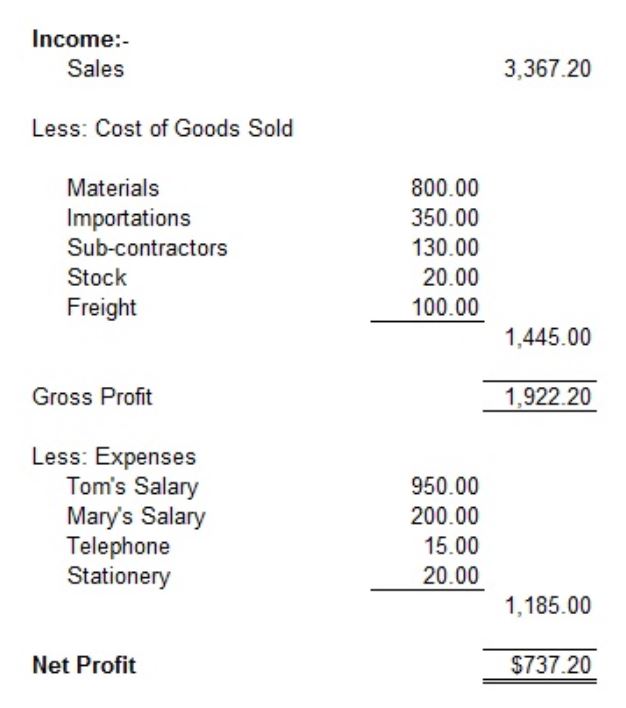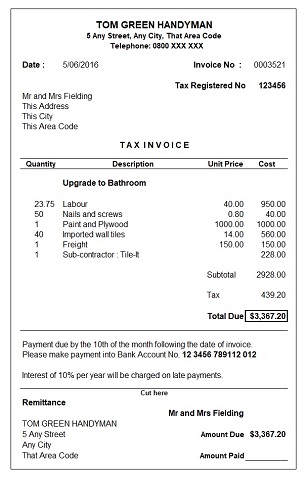- Home
- Accounting Profit
- Calculate COGS
Calculate Cost of Goods Sold
Learn to calculate cost of goods sold (COGS) - also known as cost of sales - and where it fits into the profit and loss statement.
Cost
This is the amount the business paid to buy the goods they are selling. To get the cost into the bookkeeping system the bookkeeper will need to
enter the details off the purchase invoice for the goods. The amount taken off the purchase invoice can be made up of the following:-
The price of the goods ~ less discount ~ plus freight = the cost.
Goods
These are items the business purchases to
sell to customers and they can encompass all sorts of descriptions like
stock, parts, products, equipment, retail goods, wholesale goods,
freight, sub-contractors - it all depends what the nature of the
business is, what they sell and how they want to name the items in the
bookkeeping system.
Sold
Only the cost
price of the goods that are sold are included in the COGS account. Goods
that are inventoried, like stock, remain in the inventory account (an
asset account) until sold at which time they are journaled into the
COGS account.
Calculate Cost of Goods Sold -
Business Example
Here is a real life scenario using the fictitious handy man from our bookkeeping basics section which will give you an idea of what to include to calculate cost of goods sold :-
"Tom Green was contracted by Mr and Mrs Fielding to fix up their old bathroom. Here is a list of all the things Tom bought, used or kept a record of whilst working the job:-
- all the materials used to improve the look of the bathroom such as paint, plywood, glue etc. totaling $800
- some small tools – a drill and screwdrivers for $75
- special wall tiles that the Fieldings had asked him to procure from overseas $350
- freight for the wall tiles $100
- nails and screws out of his stock room - total value $20
- the hours he spent working in the bathroom and ordering the tiles - $950
- a specialized contractor to fix the special tiles to the walls for $130
Tom's reliable bookkeeper (his wife Mary) had to enter all this information into the bookkeeping system.
She added the following together to calculate cost of goods sold:-

Note: These values are the purchase cost of the items. The
selling price to the Fieldings will be more than $1,400 because Mary
will put a mark up on it. The selling price goes into the income
account, not the COGS account.
Click the thumbnail below to see an example of Mary's sales invoice.
Even though Tom bought the small tools to help him complete the Fielding job they did not become part of the physical improvement to the bathroom. They became part of the business tool collection and will be used for many other jobs, therefore, they are an expense to Tom's business not a COGS being charged to the Fieldings.
Wages and salaries i.e. the hours an employee or someone like Tom is paid for working on a job like the Fieldings one, is not usually a COGS item. Wages and salaries are usually an ordinary expense. There is an exception and this is for manufacturing businesses who can include the time an employee spends manufacturing an item being sold, or a supervisor overseeing the manufacturing process."
One way of remembering what should be included in the cost of goods sold calculation is to ask yourself if the item is:-
- going to be sold or on-charged to a customer – freight, stock, materials, sub-contractor
- part of a physical improvement to something of theirs – materials, stock, sub-contractor
- fully chargeable to them – freight, stock, materials, sub-contractor
- will end up 'belonging' to them – stock, materials
Here is a sample profit loss statement for the Fielding job to show you how the cost of goods calculation is factored in.




